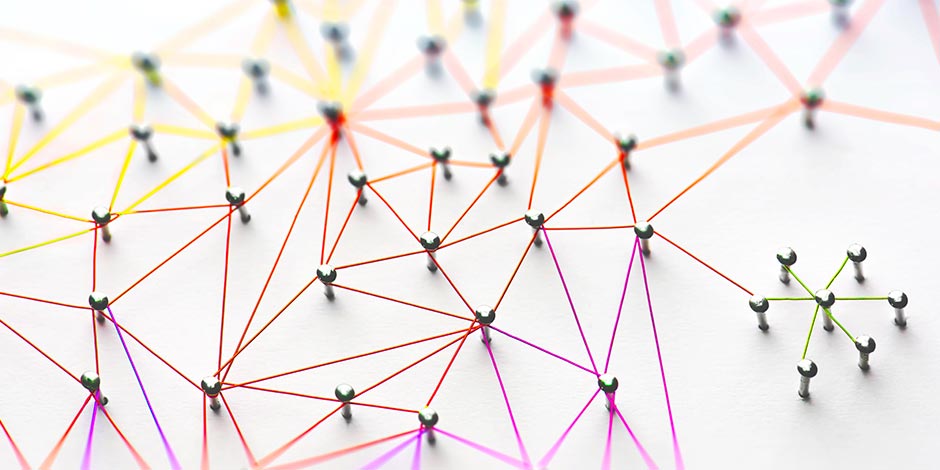The "cult of efficiency" believes deeply that the most important initiative is to generate more activity. More still, they believe that improving performance requires activity without any human effort. Much of what is touted as efficiency is really just more activity, even if it doesn't generate the desired outcome. The result is a deluge of asynchronous communication, which is about as efficient as the United States Postal Service.
This drive for efficiency misses the greater outcomes that are possible only through greater inefficiency. Before we go any further, we should agree on what we mean by inefficiency. For our purposes, I mean expending more energy and effort to accomplish something. I argue that, in many cases, more efficient options would not have the same impact as inefficient methods.
The Inefficiency of Showing Up
On the most popular business social platform, a recent post about presence was greeted warmly by salespeople and criticized by a number of marketers. The marketers stated that showing up in person was old-fashioned, suggesting it would be a return to the 1980s—or even the 1950s. But the salespeople were in favor of face-to-face interactions. In some way, these comments explain the difference between salespeople and marketers, as the first group would prefer to sit across from their prospective client, while the second group would prefer to be separated by a dozen states, or more, if possible.

Considering our definition of inefficiency, the conversation a salesperson might have by visiting the client where they work could instead be had more efficiently on a video meeting, phone call, or possibly, email. However, the difference in the qualitative value to the client would be much better in person, while also being one of higher fidelity. What's more, the effort and energy exerted is proof that you cared enough to show up.
When others make decisions based on what is most efficient, those who decide to be less transactional and more strategic will accrue the advantage. If showing up in person is out of fashion, the advantage will be even greater, as caring has always been a defining differentiator.
The Inefficiency of a Phone Call
Even though a video meeting provides greater fidelity than a phone call, as you have both an image and sound, sometimes you need to have a conversation without scheduling a meeting.
Asynchronous forms of communication have made it easier to communicate with someone when it is convenient for you, allowing the other party to the communication to respond at a time of their choosing. It's strange to watch an email conversation in real-time as each participant has a phone next to them as they type to one another. It is difficult to describe the overwhelming number of emails that clutter everyone’s inboxes as efficient. But efficiency aside, if you want to improve the effectiveness of your conversation, you would do well to pick up the telephone.

What you lose by using the telephone is allowing your client to decide when to respond. What you gain is a conversation that will provide you and the other party with an opportunity to talk to each other in real-time, changing the nature of the conversation. Any perceived inefficiency is more than counterbalanced by the benefits of having a real conversation.
Too often, conversations that should be done in person or over the phone are initiated in an email or left on another asynchronous messaging platform.
The Medium Is the Message
When the communication theorist Marshall McLuhan said “the medium is the message,” he could not have known how true this would be in a future with so many media available. He died in 1980, but he might have found our current environment astonishing.
There are a number of problems with using automation for prospecting. First is the actual communication technique. Typically, the person who is prospecting sends a message and requests a connection, then follows up with a self-oriented and outdated "why us" message. This approach is based on the belief that the recipient fits their ICP (ideal customer profile), a determination that is usually based on a title alone. The message has not been tailored for you, the prospect, specifically, which reveals that the LinkedIn spammers and scammers have no real interest in helping you with whatever it is that you do. It also sends the message that you are not worth the investment required of less efficient communication. (As a side note, ICP also refers to the band Insane Clown Posse, which is probably a fitting description of the spammers and scammers.)
Your mode of communication can send the message that you believe the other party deserves your full attention and that the conversation is important enough that you are unwilling to treat the person or the issues as something less. Digital media were never designed to replace higher-level conversations, despite being routinely used for this type of communication. As a result, the conversations have become ever more transactional.

Those who want to create an advantage in sales, leadership, and human relationships would do well to expend the effort and choose the most inefficient medium available. When your mode of communication signals true interest, caring, and your desire to understand, it is clear that you consider the other person to be important. By rising above a transactional interaction, you can have a conversation about your prospective client’s needs and challenges, and offer guidance and advice.
The Communication Hierarchy
There is a hierarchy of communication based on the value it offers to all parties involved. The greatest value is in face-to-face meetings, which communicate caring and effort. The next step down is a phone call, which also communicates that you are interested in hearing the other person, and that you care about the conversation. However, as you move further down the hierarchy, you communicate something different than what you intend, especially when a higher-value conversation is needed. For example, an email or chat message might communicate that you don’t care all that much about the other party’s main focus, or that you are afraid to broach an important subject.
All things being equal, relationships win. All things being unequal, relationships still win. When your job is to make everything unequal, you can start with how you communicate.








.jpg?width=768&height=994&name=salescall-planner-ebook-v3-1-cover%20(1).jpg)


